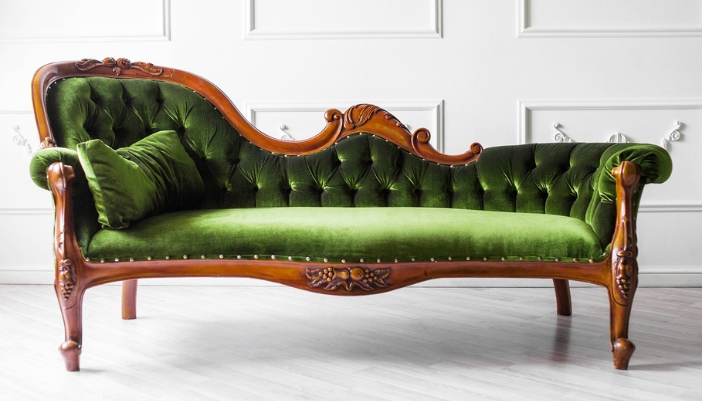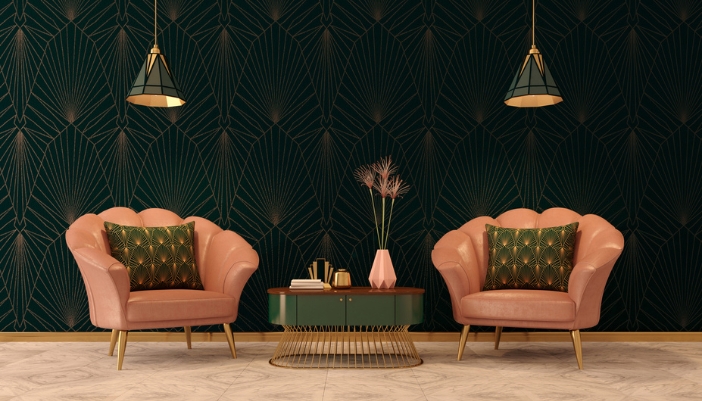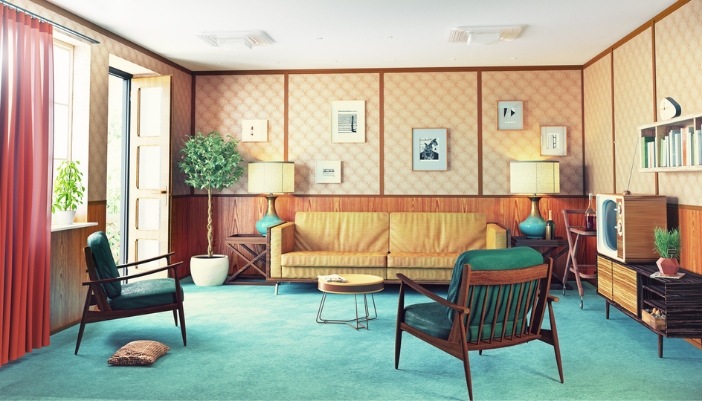Step into a time machine of home decor... Welcome to the golden age of furniture design, from the ornate elegance of the 1900s to the bold, atomic vibes of the 1950s. This isn't just a history lesson; it's a time travel experience through the living spaces of yesteryears, uncovering how each decade's signature style has left a mark on how we decorate today. Let's rewind the clock and uncover the charm and charisma of early 20th-century furniture trends that are still turning heads in the 21st century.

1900s: The Art Nouveau Movement
At the dawn of the 20th century, the Art Nouveau movement swept through the world of art and design, introducing an entirely new aesthetic to furniture. This period, spanning from the late 1890s to around 1910, was characterized by its organic forms, flowing lines, and intricate patterns inspired by nature.
- Organic Shapes and Lines: Furniture pieces from this era often featured sinuous lines and shapes inspired by plants, flowers, and other natural elements. This aimed to bring the asymmetry and fluidity of nature into the home.
- Craftsmanship and Materials: There was a strong emphasis on craftsmanship and using high-quality materials. Wood, glass, and metal were intricately carved, molded, and shaped to create pieces that were as much works of art as they were functional items.
- Decorative Details: Inlays, marquetry, hand-painted motifs, and other decorative details were common, often depicting scenes from nature such as leaves, vines, and flowers.
In today's design landscape, the Art Nouveau style is making a notable comeback, blending its signature curves and natural motifs with modern sensibilities. This modern take on Art Nouveau includes furniture like curved sofas and chairs adorned with floral motifs, all crafted using sustainable materials. This fusion of early 20th-century aesthetics with 21st-century environmental values highlights Art Nouveau's enduring influence, showcasing how historical design movements continue to inspire innovation in furniture design.
1910s: The Arts and Crafts Movement
The 1910s witnessed the flourishing of the Arts and Crafts movement, emphasizing handcrafted beauty, natural materials, and a return to simpler times amidst the burgeoning industrial age.
- Handcrafted Detail and Simplicity: Furniture of this era showcased meticulous craftsmanship with a focus on simple, functional designs. The movement's disdain for mass-produced items spurred a return to traditional woodworking techniques and the celebration of the artisan's skill.
- Natural Materials: The use of natural materials was paramount, with wood, metal, and stone being preferred for their inherent beauty and durability. Furniture pieces often left these materials in a somewhat raw, unadorned state to highlight their organic appeal.
The 1910s introduced a philosophy that deeply valued the connection between the maker and the object, a sentiment that has woven its way back into the fabric of contemporary furniture design, resonating with individuals seeking authenticity and sustainability in their furnishings.

1920s: Art Deco and Modernism
The 1920s, known as the Roaring Twenties, brought about a dramatic shift in design and culture, characterized by the rise of Art Deco and Modernism. This era celebrated innovation, luxury, and a break from traditional forms, influencing architecture, fashion, and, notably, furniture design.
- Geometric Shapes: Furniture designs began to embrace geometric forms, sharp lines, and symmetrical patterns.
- Luxurious Materials: The use of exotic woods, shiny metals, mirrored surfaces, and lush fabrics became prevalent, adding glamour and sophistication.
- Bold Colors: A departure from the muted tones of previous decades, the 1920s saw an embrace of bold, vibrant colors and high-contrast color schemes.
The Art Deco and Modernist movements of the 1920s continue to significantly influence contemporary furniture design, with modern designers drawing on the era's aesthetic to blend historical elegance with present-day functionality. Today's furniture influenced by this period often showcases streamlined, geometric shapes and the use of metal accents and glass. Additionally, the bold colors and patterns characteristic of the 1920s are still prevalent in modern decor, adding vibrancy and a touch of the past's glamour to interiors.
1930s-1940s: Streamline Moderne and Mid-Century Modern
The 1930s and 1940s were defined by the Streamline Moderne movement, which evolved into what we now recognize as Mid-Century Modern design. This period focused on streamlined shapes, practicality, and a less is more approach, reflecting the societal shift towards simplicity and functionality in the post-war era.
- Streamlined Shapes: Furniture embraced smooth, rounded edges and horizontal lines, suggesting speed and efficiency.
- Functional Design: Furniture was designed with functionality in mind, for practical use and comfort without excessive decoration.
- Innovative Materials: The use of new materials like plywood, plastic, and tubular steel became more common, reflecting technological advances and a shift toward mass production.
During the 1930s and 1940s, furniture design underwent a significant transformation with the Streamline Moderne movement, which later evolved into the Mid-Century Modern style we recognize today. The clean lines, minimalist aesthetics, and emphasis on open, airy spaces from this period have profoundly influenced contemporary furniture design. Today, the Mid-Century Modern style is experiencing a resurgence, with its timeless appeal making it a popular choice for those looking to blend classic and modern elements in their home decor.

1950s: The Atomic Age
The 1950s, often referred to as the Atomic Age in design, embraced a forward-looking approach to furniture that was inspired by the era's optimism and the rapid advancements in technology and space exploration. This decade is marked by its distinctive aesthetic that featured futuristic shapes, a palette of vibrant colors, and the innovative use of materials.
- Futuristic Shapes and Materials: Furniture designs from the 1950s showcased sleek, aerodynamic forms with an emphasis on organic shapes and the use of novel materials like plastic, Formica, and fiberglass that allowed for greater flexibility in design.
- Vibrant Colors and Patterns: The Atomic Age brought an explosion of bold colors and dynamic patterns to furniture design, reflecting the era's spirit of exploration and innovation. Bright pastels, deep reds, and vibrant blues became commonplace, often complemented by geometric patterns and motifs inspired by atomic and space themes.
Today, the influence of the Atomic Age is evident in modern furniture design, where retro-futuristic styles blend clean lines and organic shapes with contemporary materials and technology. This resurgence of '50s-inspired aesthetics in contemporary interiors reflects a nostalgia for mid-century modern design, coupled with a desire for furniture that embodies both the spirit of innovation and the comfort of familiarity.
And there you have it—a whirlwind tour through the most defining eras of furniture design from the 1900s to the 1950s. It's fascinating to see how the threads of the past weave into the fabric of our modern homes, bringing with them stories of innovation, artistry, and revolutions that shaped the way we live. So, next time you find yourself admiring a piece of furniture, remember, it might just be a piece of history reinvented for today's living. If your home could use a jump into a different decade, we’re here to help!
